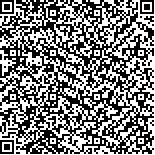本文已被:浏览 822次 下载 501次
Received:July 26, 2022 Published Online:March 20, 2023
Received:July 26, 2022 Published Online:March 20, 2023
中文摘要: 目的 探讨重复经颅磁刺激(TMS)及干预时机对急性脑梗死后运动功能障碍恢复的影响。方法 选取2020年6月至2021年12月海南医学院第一附属医院神经内科急性脑梗死所致运动功能障碍的患者120例,纳入研究。按照完全随机方法分为治疗组(n=60)和对照组(n=60),两组均予常规药物与康复训练治疗,治疗组给予重复TMS干预(低频治疗30例、高频治疗30例),对照组给予假刺激干预。治疗组再根据TMS干预时机分为距发病时间<72 h及>72 h亚组。 对比治疗组与对照组、低频亚组与高频亚组、<72 h亚组和>72 h亚组之间在治疗前后的美国国立卫生研究院卒中量表(NIHSS)评分、 Barthel指数(BI)、运动功能和Wolf评分。结果 治疗后1个月两组NIHSS、BI、运动功能、Wolf评分较治疗前均显著改善(P<0.01),且治疗组NIHSS、BI、运动功能(MAS评分)、Wolf评分较对照组改善更显著(P<0.01)。低频、高频两亚组治疗后1个月NIHSS、BI、运动功能、Wolf评分,组间比较差异无统计学意义(P>0.05)。距发病时间<72 h与距发病时间>72 h两亚组治疗后1个月NIHSS、BI、运动功能、Wolf评分组间比较差异无统计学意义(P>0.05)。结论 重复TMS可有效改善发病1周内的急性脑梗死后患者的运动功能,不同干预时机和刺激频率对患者脑梗死后运动功能的恢复影响无差别。
Abstract:Objective To investigate the effect of repetitive transcranial magnetic stimulation (TMS) and its intervention timing on the recovery of motor dysfunction after acute cerebral infarction (ACI). Methods A total of 120 patients with motor dysfunction caused by ACI in The First Affiliated Hospital of Hainan Medical University from June 2020 to December 2021 were selected and randomly divided into control group and treatment group (n=60, each). Both groups were treated with routine medicine and rehabilitation training,and treatment group was treated with repetitive TMS (30 cases of low-frequency therapy, 30 cases of high-frequency therapy) , while control group was treated with sham stimulation. According to the time of TMS intervention, treatment group was divided into two subgroups: <72 h and >72 h after onset. National Institutes of Health Stroke Scale (NIHSS), Barthel index (BI), motor function (MAS) and Wolf score were compared between treatment group and control group, low-frequency subgroup and high-frequency subgroup, <72 h subgroup and >72 h subgroup before and after treatment. Results One month after the treatment, the NIHSS, BI, motor function scores and Wolf scores in treatment group were significantly improved compared with those before treatment and those in control group (P<0.05); there was no significant difference in NIHSS, BI, motor function and Wolf scores between the low-frequency subgroup and high-frequency subgroup, and between <72 hours subgroup and >72 hours subgroup (P>0.05). Conclusion Repetitive TMS can effectively improve the motor function of patients with ACI within one week after onset, and different intervention timing and stimulation frequency have no significant effect on the recovery of motor function after cerebral infarction.
keywords: Cerebral infarction, acute Motor dysfunction Repetitive transcranial magnetic stimulation Timing of intervention Rehabilitation
文章编号: 中图分类号:R741 文献标志码:A
基金项目:海南省自然科学基金高层次人才项目(2019RC379);海南省临床医学中心建设项目
引用文本:
